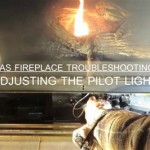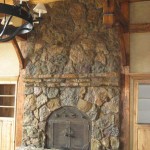Infrared Quartz Electric Fireplace Efficiency: A Deep Dive
Infrared quartz electric fireplaces have gained considerable popularity as a supplemental heating source, offering a combination of aesthetic appeal and functional warmth. Understanding the efficiency of these units is crucial for consumers looking to make informed decisions about their heating options. This article delves into the factors influencing the efficiency of infrared quartz electric fireplaces, exploring their energy consumption, heat distribution, and overall cost-effectiveness.
Electric fireplaces, in general, operate by converting electrical energy into heat. Unlike traditional wood-burning fireplaces, they do not require venting, making them easier to install and maintain. Infrared quartz models utilize quartz heating elements to generate infrared radiation, which directly heats objects and people in the room rather than heating the air itself. This direct heating method is often touted as a key factor in their perceived efficiency.
The efficiency of any heating appliance is fundamentally linked to how effectively it transforms energy input into useful heat output. In the context of fireplaces, this efficiency also considers the amount of heat lost to the surrounding environment and the effectiveness of heat distribution within the desired space.
Key Point 1: Understanding the Mechanics of Infrared Quartz Heating
The core principle behind infrared quartz heating lies in the generation and projection of infrared radiation. Quartz tubes, when heated by electricity, emit infrared waves. These waves travel through the air until they encounter a solid object or surface. When these waves come into contact with matter, they are absorbed, causing the molecules within the object to vibrate more rapidly, which manifests as heat. This direct heating mechanism distinguishes infrared quartz fireplaces from convection-based heaters that primarily warm the air.
The efficiency benefit arises from the fact that infrared radiation directly heats the occupants and objects in a room rather than expending energy heating the air, which can then be lost through drafts or poor insulation. This targeted heating can result in a more immediate and noticeable warming effect compared to traditional heaters.
Manufacturers often emphasize the efficiency of infrared quartz fireplaces by highlighting the rapid heating capabilities and the ability to maintain a comfortable temperature in a specific zone. The "zone heating" concept is central to understanding the potential cost savings. Rather than heating an entire house, a single infrared quartz fireplace can effectively warm a living room or bedroom, allowing occupants to reduce the thermostat setting for the central heating system and thereby decrease overall energy consumption.
However, it's important to recognize that while infrared heating provides a feeling of warmth by directly heating the body, it does not inherently create a warmer ambient air temperature. This is a crucial distinction to consider when evaluating the effectiveness of this heating method for different applications.
Key Point 2: Factors Affecting the Energy Consumption of Infrared Quartz Fireplaces
The energy consumption of an infrared quartz electric fireplace is primarily determined by its wattage rating. These fireplaces typically range from 1000 to 1500 watts. A 1500-watt fireplace, when running at full power for one hour, will consume 1.5 kilowatt-hours (kWh) of electricity. To estimate the running cost, one needs to multiply the kWh consumption by the local cost of electricity. For example, if the electricity rate is $0.15 per kWh, then running a 1500-watt fireplace for one hour would cost $0.225.
Several factors can influence the actual energy consumption beyond the wattage rating. Thermostat settings play a critical role. Most infrared quartz fireplaces come equipped with adjustable thermostats that allow users to maintain a desired temperature. By setting the thermostat to a moderate level, the fireplace will cycle on and off, reducing overall energy consumption compared to running continuously at full power.
The size and insulation of the room also significantly impact energy consumption. A larger room will require more energy to heat effectively, while a poorly insulated room will experience greater heat loss, necessitating higher and more frequent operation of the fireplace. Drafts and air leaks around windows and doors can negate the benefits of zone heating and increase energy consumption.
Furthermore, the quality and age of the quartz heating elements can affect efficiency. As the elements age, their ability to efficiently convert electricity into infrared radiation may decrease, leading to increased energy consumption for the same level of heat output. Regular maintenance, such as cleaning the heating elements, can help maintain optimal performance and efficiency.
The inclusion of additional features, such as flame effects, can also contribute to energy consumption. While these effects enhance the aesthetic appeal of the fireplace, they often require separate electrical components that consume power, albeit a relatively small amount.
Key Point 3: Comparing Infrared Quartz Fireplace Efficiency to Other Heating Methods
When assessing the efficiency of infrared quartz electric fireplaces, it's essential to compare them to other heating methods, such as central heating systems (gas or electric furnaces), space heaters (convection or radiant), and traditional fireplaces. The efficiency metrics used for comparison vary depending on the type of heating system.
Central heating systems are typically rated by Annual Fuel Utilization Efficiency (AFUE) for gas furnaces and Heating Seasonal Performance Factor (HSPF) for heat pumps. These ratings indicate the percentage of fuel or energy converted into usable heat over an entire heating season. While modern gas furnaces can achieve AFUE ratings of 90% or higher, older models may be significantly less efficient. Electric resistance furnaces typically have an efficiency close to 100%, but electricity is often more expensive than natural gas.
Traditional fireplaces, especially older models, are notoriously inefficient. A significant portion of the heat generated by burning wood is lost up the chimney, often exceeding 80%. This results in a net heating efficiency of only 20% or less. Newer, EPA-certified wood stoves and fireplaces are more efficient, but still require venting and careful operation to minimize heat loss and emissions.
Compared to these alternatives, infrared quartz electric fireplaces offer a localized and potentially more efficient heating solution under specific circumstances. If the goal is to heat a single room and the fireplace is properly sized for the space, the direct heating mechanism can provide a perceived sense of warmth at a lower energy cost than heating the entire house with a central heating system. However, it is crucial to remember that the overall cost-effectiveness depends on factors such as the local cost of electricity, the thermostat settings, and the insulation of the room.
Convection-based space heaters, which heat the air, can be less efficient than infrared models in certain situations. Convection heaters require more time to warm a room and are more susceptible to heat loss through drafts. Infrared heaters, on the other hand, provide immediate warmth and are less affected by air movement. However, in well-insulated spaces with minimal drafts, the difference in efficiency between convection and infrared heaters may be less pronounced.
Ultimately, the most efficient heating method depends on the specific needs and circumstances of the user. Infrared quartz electric fireplaces can be a cost-effective option for supplemental heating in well-defined zones, but a comprehensive assessment of energy consumption, heating requirements, and alternative heating options is essential for making an informed decision.

Baboom 22 8 In W Black Infrared Quartz Electric Fireplace The Fireplaces Department At Com

Duraflame 1 000 Sq Ft Infrared Quartz Electric Fireplace Stove Heater Black Com

26 Electric Fireplace Insert Recessed Heater Bestoutdor

Infrared Quartz Heater 17 5 Portable Electric Fireplace Space With 3d Flame Effect Free Standing Stove For Office Home Overheat And Tip Over Protection Indoor Outdoor Com

Costway 26 Infrared Quartz Electric Fireplace With Realistic Pinewood Us

Turbro 50 In Wifi Electric Radiant Fireplace With Ling Sound 1500 Watt Infrared Quartz Heater App Control Inf50w 3d The Home Depot

9 Best Electric Fireplace Inserts Of 2024 Tested And Reviewed

26 Inches Infrared Electric Fireplace With Realistic Pinewood Ember Bed Costway

Allen Roth 68 In W White Infrared Quartz Electric Fireplace At Com

Freestanding Electric Stoves Buyer S Guide Fireplaces Direct
Related Posts








